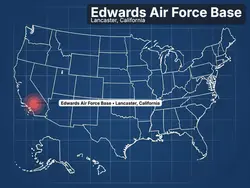The Ultimate PCS Guide to Naval Station Norfolk, Virginia

I. Introduction & Area Overview
Introduction Welcome to Naval Station Norfolk, the heart of the U.S. Navy's Atlantic Fleet. This is the largest and busiest naval station in the world, serving as the homeport for a massive concentration of naval power, including aircraft carriers, cruisers, destroyers, submarines, and support ships. As the headquarters of U.S. Fleet Forces Command, the mission is to provide combat-ready naval forces to project power and maintain security across the globe. A PCS here places you in a region known as Hampton Roads, one of the largest and most historic military communities in the nation, where the presence of the sea and the service is a part of everyday life.
Location & Climate Naval Station Norfolk is located in Norfolk, Virginia, which is one of seven independent cities that make up the Hampton Roads metropolitan area (also known as the "757"). The region's geography is defined by water—the Chesapeake Bay and the James and Elizabeth Rivers—which creates a series of peninsulas and islands connected by a critical network of bridges and tunnels. You will experience a four-season humid subtropical climate:
- Summers: Hot and very humid, with frequent thunderstorms.
- Winters: Generally cool and damp, with occasional cold snaps that can bring light snow or ice.
- Hurricanes & Flooding: The region is low-lying and at high risk for hurricanes, Nor'easters, and coastal flooding. Preparedness is a critical part of living here.
Local Vibe & Culture Hampton Roads is a military "megaplex." With huge installations for the Navy, Air Force, Army, and Coast Guard, the military is the dominant cultural and economic force in the region. The vibe is a unique mix of Southern, coastal, and the constant energy of the armed forces. Each of the seven cities has its own distinct personality. A major benefit is the reasonable cost of living, which is near the national average, making it an affordable coastal duty station.
II. On-Base Housing & Amenities
On-Post Housing
- Provider: On-base housing throughout the Hampton Roads region is privatized and managed by Liberty Military Housing.
- Reputation & Condition: The housing inventory is enormous, with dozens of distinct neighborhoods spread across the entire region, not just at NS Norfolk. Quality is extremely varied, ranging from beautiful historic homes to modern new builds and a large stock of older, dated quarters. A key consideration is choosing a housing area that avoids a bridge-tunnel commute to your workplace.
- Waitlist Times: Can be long for the most popular and renovated neighborhoods, but the sheer volume of available housing often makes wait times more manageable than in high-cost-of-living areas.
Amenities & Services
- Commissary & Exchange: There are multiple large Commissaries and Navy Exchanges (NEX) located at various bases throughout Hampton Roads, ensuring you are always close to one.
- Healthcare: Naval Medical Center Portsmouth is one of the Navy's largest and oldest hospitals, serving as the premier military medical facility for the entire region.
- MWR (Morale, Welfare, and Recreation): MWR is world-class and regionally integrated. It offers numerous marinas, golf courses, fitness centers, and access to fantastic military-only beaches, like Sea Mist at Dam Neck in Virginia Beach.
III. Local Housing Market & Popular Neighborhoods (Off-Base)
Market Overview The local housing market is active, diverse, and affordable. Your BAH will generally provide for a comfortable lifestyle. The single most important factor when choosing where to live is the commute, specifically avoiding the need to cross a major bridge-tunnel daily. A typical 3-bedroom rental will range from $1,700 to $2,500.
Popular Neighborhoods for Military Families
- Virginia Beach:
- Character: The largest city in Virginia and the most popular choice for military families. It's a vast suburb known for its excellent schools (particularly in the Kellam and Cox high school zones), family-friendly amenities, and resort oceanfront.
- Commute: Can be long but is manageable as it avoids the tunnels (30-50 minutes).
- Price Point: Moderate to High.
- Chesapeake:
- Character: Another very popular suburban city, known for its top-rated schools (in the Great Bridge and Hickory areas), newer homes, and strong community feel.
- Commute: Can be challenging depending on route and traffic (30-50 minutes).
- Price Point: Moderate.
- Norfolk:
- Character: Offers a more urban and historic feel. Neighborhoods like Ghent and Larchmont are beautiful, walkable, and close to dining and culture, while other parts of the city offer more traditional suburbs. Most convenient for NS Norfolk.
- Commute: Excellent (10-25 minutes).
- Price Point: Moderate.
- The Peninsula (Hampton/Newport News):
- Character: Home to Langley AFB and Fort Eustis. Not recommended for personnel working at NS Norfolk due to the daily nightmare of crossing the Hampton Roads Bridge-Tunnel (HRBT).
IV. Schools & Childcare
On-Post Schools There are NO DoDEA schools in the Hampton Roads region. All children attend local city public schools.
Off-Post Schools
- Primary Districts: Each city has its own school district. Virginia Beach City Public Schools and Chesapeake Public Schools are generally considered to be the best and most sought-after in the region, which is a major reason for their popularity.
- School Ratings: Data is available on the Virginia Department of Education (VDOE) website.
Childcare
- On-Post: The region has a massive network of on-base Child Development Centers (CDCs) across its many installations. Despite the large number of spots, demand is huge, and waitlists are very long. Register at MilitaryChildCare.com.
- Off-Base: Off-base childcare is widely available and is affordable compared to major metro areas.
V. Things to Do, Pro-Tips & Weekend Trips
Local Must-Dos
- Visit Nauticus and the Battleship Wisconsin: Explore the maritime museum in downtown Norfolk and then walk the decks of one of the largest battleships ever built by the U.S. Navy.
- Enjoy the Virginia Beach Oceanfront: Stroll or bike the famous 3-mile-long boardwalk, relax on the wide sandy beach, and take a photo with the iconic King Neptune statue.
- Explore America's Historic Triangle: Take a short drive to visit Colonial Williamsburg, the Jamestown Settlement, and the Yorktown Battlefield—the birthplace of America.
- Tour Naval Station Norfolk: Take an official bus tour of the base to get an up-close look at the massive aircraft carriers and warships.
- Hike at First Landing State Park: Explore the unique and beautiful trails that wind through cypress swamps and forests, where the first English settlers landed in 1607.
Insider Info & Pro-Tips
- THE #1 RULE: LIVE WHERE YOU WORK. Do not, under any circumstances, choose a home that requires you to commute through a bridge-tunnel (specifically the HRBT or MMRBT) every day. A 15-mile commute can take two hours. This is the most important piece of advice for living in Hampton Roads.
- Know Your Flood Zone: The entire region is low-lying. Know your home's flood risk and evacuation zone. Flood insurance is strongly recommended, even if not required.
- Jet Noise is the Sound of Freedom: If you live in Virginia Beach, particularly near NAS Oceana, the deafening roar of F/A-18 Super Hornets will be the soundtrack of your daily life.
- Explore All Seven Cities: Each city in the "757" has a unique character. Take time to explore Norfolk's historic neighborhoods, Suffolk's rural charm, and the Peninsula's rich history.
Weekend Trips
- The Outer Banks, NC (1.5 - 2 hours): An easy and iconic weekend getaway to the beautiful barrier islands of North Carolina.
- Washington, D.C. (3 - 4 hours): Drive or take the train to the nation's capital to explore the free Smithsonian museums and historic monuments.
- Richmond, VA (1.5 hours): Virginia's capital offers a fantastic food and brewery scene, world-class museums, and a vibrant history.
- Shenandoah National Park (3 hours): Head west to the Blue Ridge Mountains for spectacular views, great hiking, and a drive along the scenic Skyline Drive.
Ready for your next move?
Our PCS Hub has checklists, base guides, and all the tools you need for a successful relocation.
Explore the PCS Hub



